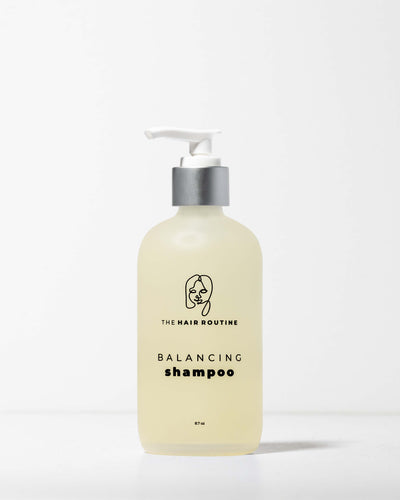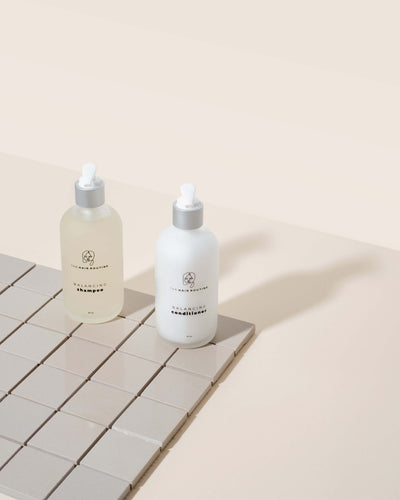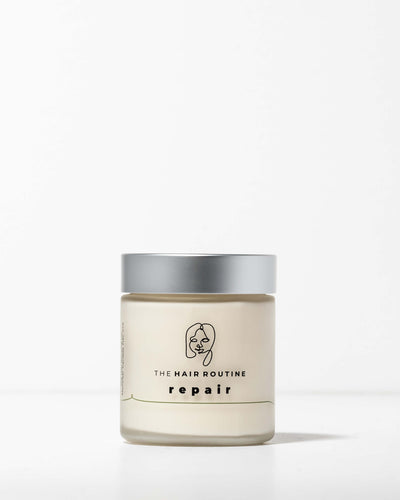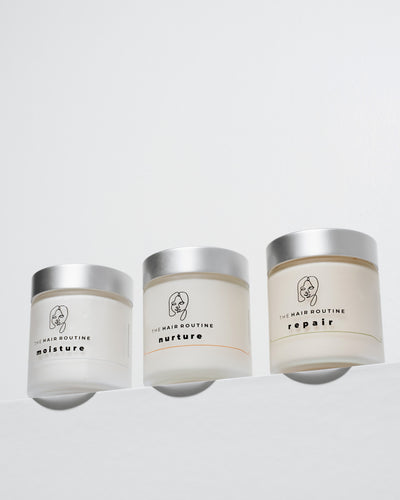6 Causes for Dry Hair and How to Fix the Problem
What you’ll learn:
- How to identify dry hair
- Most common causes for dry hair
- How to treat dry hair
Stated simply, dry hair is simply a lack of water inside the hair strand. All hair types need three elements to be healthy: water, oil, and protein. When there’s an excess or a lack of any of these three elements, there’s an imbalance that is reflected in the hair’s overall health. When hair misses out on moisture (water), the outer layer of the strand - called the cuticle - breaks open and makes the hair look dull and more frizzy.
How to identify dry hair
The first step is distinguishing between low porosity hair and a dry hair problem.
Some hair types tend to have the cuticles more open, making the hair look frizzy. Having highly porous hair depends on the hair type, DNA, and level of damage. High porosity hair tends to be more dry due to the fact that it’s harder to retain moisture inside the strand when the cuticles are open.
Read More: What is hair porosity?
If you notice hair becoming “crunchy” and more frizzy, even after 72 hours of not washing it, there might be a moisture problem. Another way of identifying this is by observing changes in the color of your hair. If you notice it getting lighter without using any coloring agents, this could be a clear sign of a dryness problem. As we age, dryness becomes a lot more common but there are many other factors that can cause dry hair.
Causes of Dry Hair
Excessive washing or harsh sulfates.
The sulfates found in most shampoos and soaps are there to remove dirt and oil.
When we wash our hair using these harsh sulfates, we are essentially stripping down the natural oils that our scalp produces to keep the cuticles closed, to protect the inside layers and avoid allowing moisture to escape.

Shop: Sulfate-Free Balancing Shampoo
Environmental Conditions
Living in a warm and dry climate can cause the rapid loss of moisture in the strands. In this case, extra moisture must be supplemented. Look for ingredients that have the ability to absorb moisture from the air and retain it inside the strand, like panthenol.

Heat-Styling
Heat causes the water inside the strands to evaporate. The tools we use to style hair such as blow dryers and flat irons can reach temperatures of up to 300F, harming the cuticles and letting all the moisture escape.
Hard Water
Hard water has a pH of 8.5 due to minerals that change its pH. Washing your hair regularly with hard water increases the negative electrical charge of the strands, increasing friction between them and causing more cuticle damage than usual and allowing moisture to escape. Having a good pH balance in your hair is important for moisture retention which gives hair its elasticity and prevents fungus or bacteria from growing.
Chlorinated Water
Overexposure to chlorine damages the cuticles, making the hair brittle. In some cases, hair may even turn greenish because of the effect of copper - a metal found in pool water - and chlorine which, together, form a thin film-like substance that sticks to the protein of the hair.
Health Condition
In some cases, dry hair can be caused by an underlying health condition. An eating disorder that leads to malnutrition commonly causes dryness in hair and skin. Hypoparathyroidism and is a condition in which the level of calcium in the blood decreases, directly affecting bones, teeth, and hair. Another condition in which the production of hormones is directly linked to the hair’s health is Hypothyroidism.
If you are sure your hair routine serves the purpose of replenishing the hair strands with water, oil and protein but your hair still feels dull, frizzy, and lifeless, see a medical professional that can help you better define the issue and determine the right treatment.
How to treat dry hair
In most cases, the solution to this common hair care problem is as simple as changing some hair care habits. Following a personalized hair care routine can make all the difference. Knowing exactly what your hair type needs is the first step to tackling many of the most common hair issues. Complete this hair test and receive the ideal hair care routine for you. It will deliver a report that specifies the frequency in which your hair needs water, oil, and protein to be perfectly balanced and healthy.






